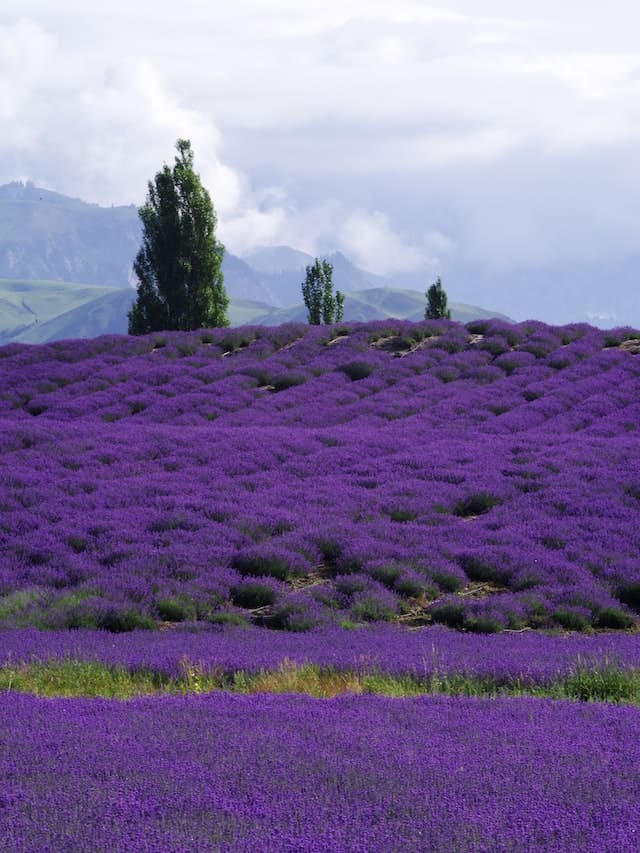populating that map with plants and animals
It might seem frivolous to worry about the flowers growing at the road’s verge when your hero is off on a quest to save the world. And not all readers have the same preferences; some people would rather less atmosphere and more pithy dialogue. For my tastes, though, there’s nothing like a dash of scenery to help locate me in a story’s reality. That’s where a little extra attention to your worldbuilding can pay off.
A world isn’t just the people causing trouble. It’s more than mountains and beaches. There’s all that green muck growing all over everything. Birds that clutter the dawn with their serenades, insects that sing the sun to bed. You can get a lot of mileage out of a few choice details.
fruited plains
I won’t go on ad nauseum about why I like these details and what value I think they add to a story. I’ll just repeat that, for my taste, a hint of color never goes amiss. How to go about actually doing this when one isn’t a botanist?

My go-to when I want to get specific is to come up with somewhere similar on Earth. Same latitude or altitude. Wet versus arid. What kind of seasons they have and how many, whether one, three, or four. Then I just poke around on the internet until I find something that fits and run searches on ‘plants native to X.’ You don’t need to be an expert or know an expert, just be willing to put in the work.
where do we fit in?
Humans on Earth generally go about acting as if we own the world. We believe that we do, and that this is the proper ordering of things. Even if your story is located in a fictional alternate version of this planet, though, the question is worth asking: where do humans fit in the larger scheme of the ecosystem?
I can’t see any reason why this isn’t as relevant to a story where humans aren’t the protagonists and possibly don’t exist. If your story is about talking frogs or incorporeal beings made entirely of thoughts, I want to know how they relate to other beings. Two issues come to mind in this arena, both interesting:
- are the protagonist’s people more often predators or prey?
- what if any animals have they domesticated?
Ever since we did for the short-nosed bear, we’ve been strutting about quite confidently, convinced that only viruses can still make us dinner. Sure, people die to predators across the globe every year, but the threat of predation isn’t one that occupies a central place in most of our minds anymore. When about to leave the house, it isn’t common to check the weather, grab the right coat, then also equip oneself with whatever weapon is necessary to fend off a thing that might easily try to eat you on the way to the supermarket.
Including a predator that ubiquitous could give your world a very distinctive feel.
Along a similar route – making your world stand out – you might ask yourself whether you want your people to domesticate the same pantheon of quadrupeds and small carnivores our ancestors did. How different might a world’s history look without horses? What if our stone-age hunting companions were marsupials, and lizards kept our homes free of rodents?

That’s just a few thoughts off the top of my head, and I bet you could come up with 50 better ones to set your world apart from its neighbors.
magic beans
We don’t write speculative fiction so everything can look familiar, am I right? Mega extra bonus points for adding a few touches of purest fancy. A startling creature you invented yourself with horns on its butt instead of its head. A flower whose perfume induces murderous rage. A massive cactus that grows naturally in the shape of a maze.
Have fun! It’s been my observation that a reader can tell when the author was enjoying themself. It comes through on the page, and enthusiasm is contagious.

None of these quirks have to steal the show. You don’t have to write scenes belaboring their existence, be it magic beans or an ordinary forest of pretty trees. Just a quick glimpse is enough to let your audience know this is a real place and not just a stage.
IF YOU FOUND THIS USEFUL
You might also want to check out other posts in the series:

Comments are closed